How to use the iSpot Bayesian keys
The iSpot Bayesian keys are a novel form of key that may be different from other keys that you have encountered.
Unlike a traditional branching key, you don't have to answer questions in a fixed order. Simply describe your specimen using as many characters as you can, and the computer will sort through the list of species it knows about and suggest which is most likely. When a species is ticked, you have a good match - check the description to confirm your identification.
We'll show you how to use a Bayesian key with a very simple key to 'minibeasts' such as beetles, worms and snails. It won't tell you exactly what species you see, but it will help you decide between a beetle and a bug, or a spider and a harvestman. Why not give it a try?
Using the key
Let's say you've seen this magnificent beast.
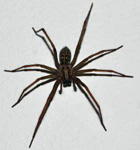
|
Here's how to use the Bayesian key to identify it.
When you start the key, all the species in the key are listed on the right. To start with they are in no particular order - each species is just as likely as another.
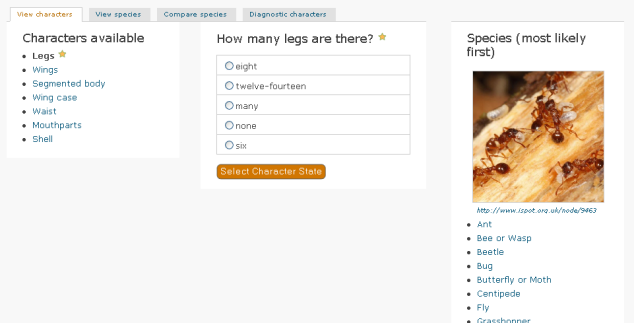
On the left is a list of characters that the key knows about. The key is suggesting that 'Legs' is a good place to start - how many legs does your specimen have?
We'll choose 'eight' and click on 'Select character state'.
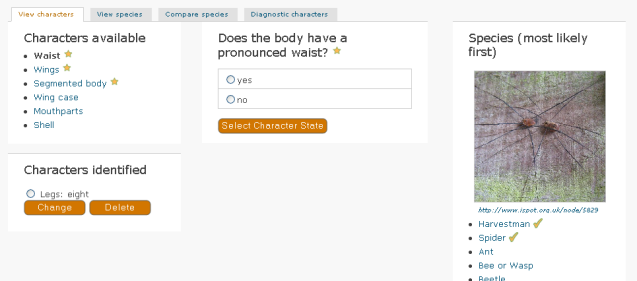
Now the list of species on the right has changed. Two species - harvestman and spider - have risen to the top of the list and have been ticked. Our specimen is likely to be one of these two, but we need another character to decide which.
The list of characters has also changed. The character 'Waist' now seems to be useful: does the body of your specimen have a pronounced waist? There is a definite waist so we'll choose 'yes'.

Now 'spider' is at the top and has three ticks - your specimen is very likely to be a spider.
Click on 'Spider' to see a brief description page. Compare the description with your specimen - are you happy you have reached the right identification?
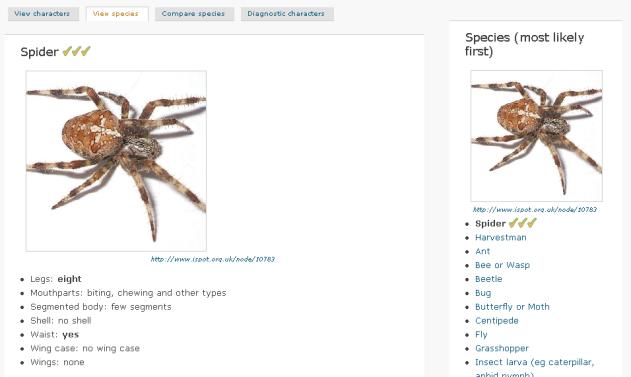
That was any easy one! It won't always be so easy, but our Bayesian keys will help as much as possible.
More features
Using abundance and location information
Whenever we can, we provide a distribution map for each species to help you decide if your identification is likely.
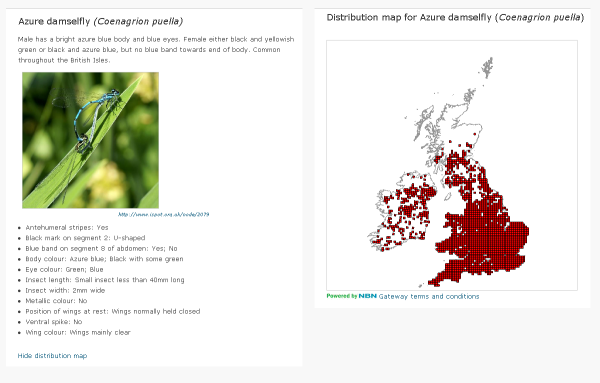
The distribution data comes from the National Biodiversity Network who gather information about many UK species.
When you start a key, we may also offer you a choice of using distribution data to help your identification. If you can tell us where you are, and if the NBN can tell us which species are found in the area, then we can start the key with the most likely species already near the top of the list. (You can choose not to use this information - you may have found an unusual species!)

Glossary
Most of our keys have an associated glossary - click on technical terms to see a definition.Skipping characters
Remember that you don't have to choose characters in the order suggested. If you don't know how to answer the first, just choose another character.
If your specimen has something distinctive about it, why not choose that character first? For example, in the minibeast key the 'Shell' character starts low down the list, but it would be a good character to choose if you've seen a snail.
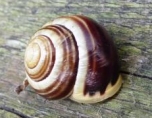
|
Changing your mind
At any stage, you can change your description. Just choose the character from the list of characters you've used and choose 'Change' (to change from eight legs to six legs for example) or 'Delete' (to drop the character altogether).
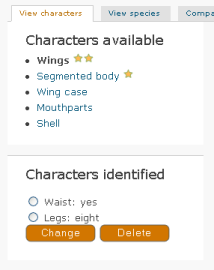
Descriptions
When you check the description of a species, characters that you have chosen which match that species are highlighted in bold. If there are characters that disagree, they will be shown in italics.
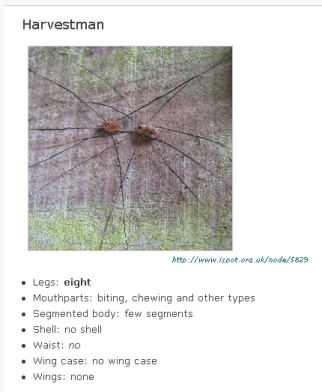
Diagnostic characters
If you have a good idea what your species is, click on the 'Diagnostic characters' tab. The description now shows the most useful distinguishing characters first.
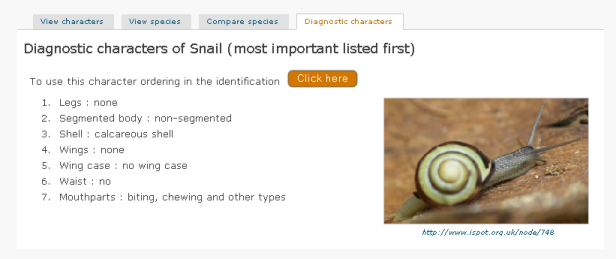
Click the button to use this order on the 'View characters' tab; that way you may confirm your hunch using the fewest characters.
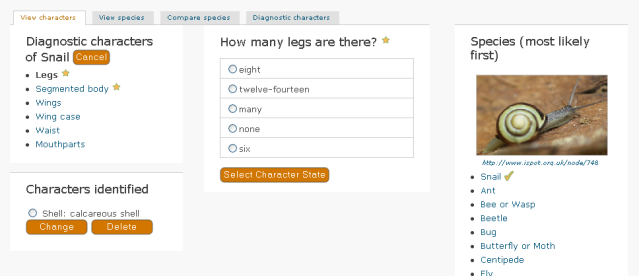
Comparing species
If you have narrowed down the possibilities and would like to know how species differ, click the 'Compare species tab' and choose two species.

Descriptions of the two species will be shown side by side - look for the characters which differ and try to use these in your identification.
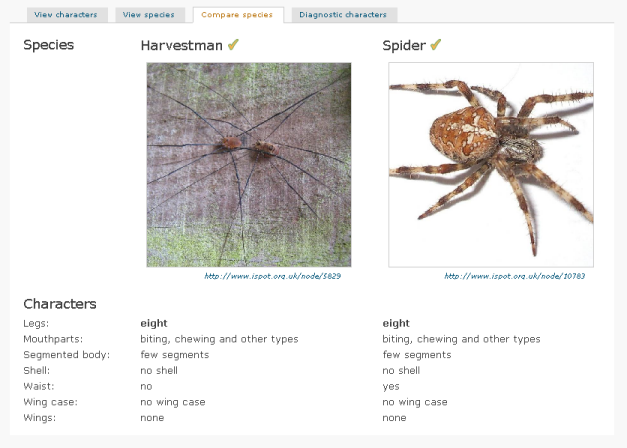
Why a Bayesian key?
Our keys use probabilities: simply, the more evidence you can provide, the more definite your identification will be. Our method is based on Bayes' Theorem, an approach to probability theory first set out by the Rev. Thomas Bayes in the 18th Century.
Future plans
Create your own keys: Perhaps you are knowledgeable about a group of species: if you can describe a set of characters for each of those species, then you have the information to make a new key. You provide the information and upload it to iSpot; our software will generate the key.
Please contact us if you would like to know more.


